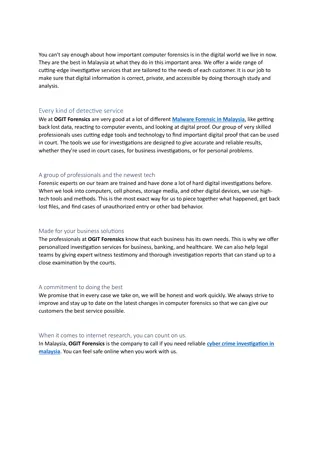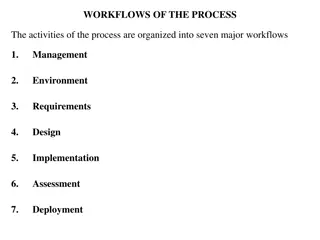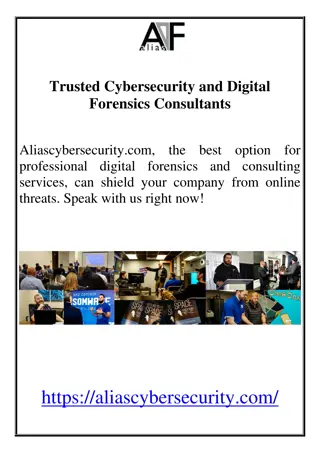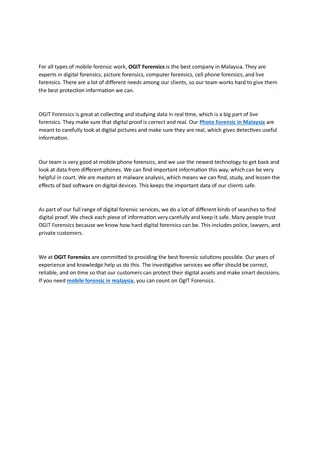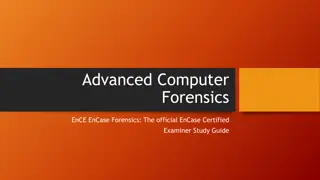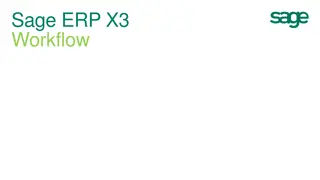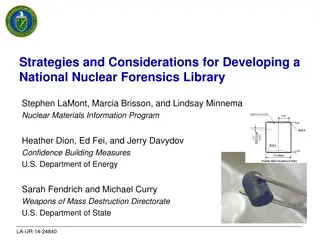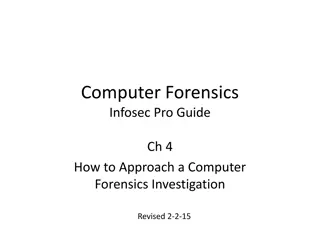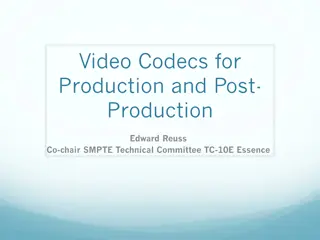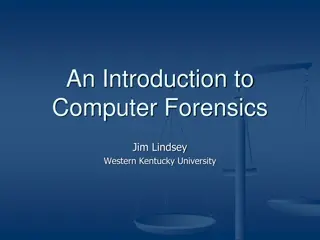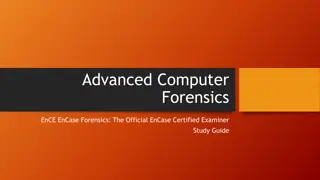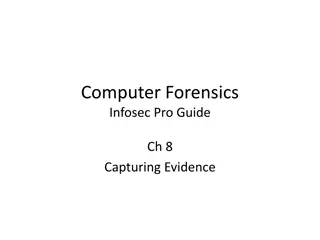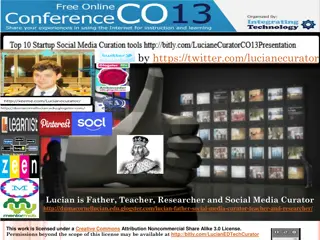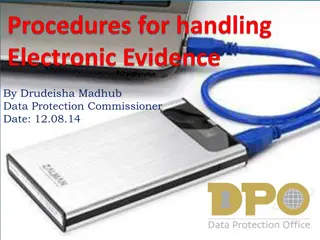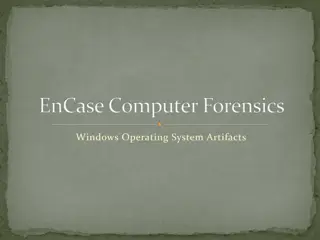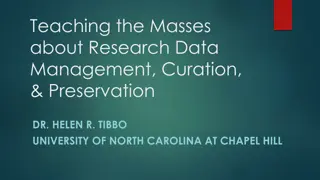Exploring the Integration of Digital Forensics in Digital Curation Workflows
This content delves into the role of digital forensics within the digital curation workflow, examining how institutions can combine tools to meet local needs and implement handoffs between different systems. It also discusses the socio-technical factors and institutional drivers influencing decision-making in this context.
Download Presentation

Please find below an Image/Link to download the presentation.
The content on the website is provided AS IS for your information and personal use only. It may not be sold, licensed, or shared on other websites without obtaining consent from the author. Download presentation by click this link. If you encounter any issues during the download, it is possible that the publisher has removed the file from their server.
E N D
Presentation Transcript
Where does digital forensics fit in the digital curation workflow? Sam Meister, Alex Chassanoff @samalanmeister BitCurator Users Forum 2018 September 14, 2018 #ossarcflow | ossarcflow_public@educopia.org
Atlanta University Center, Robert W. Woodruff Library District of Columbia Public Library Duke University Emory University Kansas Historical Society Massachusetts Institute of Technology Mount Holyoke College New York Public Library New York University Odum Institute Rice University Stanford University
open source software environments
Christopher Cal Lee (UNC SILS) Sam Meister (Educopia) Katherine Skinner (Educopia Institute) Kelly Stewart, Sarah Romkey (Artefactual) Laney McGlohon / Christine DeBella (ArchivesSpace) Kam Woods (UNC SILS) Jessica Meyerson / Alex Chassanoff (Educopia) Courtney Vukasinovic / Caitlin Perry (Educopia) Andrew Rabkin (UNC SILS) Yinglong Zhang (UNC SILS) Colin Post (UNC SILS)
investigate model test
How can institutions combine tools to support workflows that meet local institutional needs?
How can institutions implement handoffs between different function-based systems?
What socio-technical factors and institutional drivers influence decision making as institutions choose tools and create workflows?
document workflows develop tools design training modules create implementation guide
document workflows Surveys Semi-structured interviews Visual Modeling
represent workflows Procedural narratives Tabular steps Visual diagrams
educopia.org/research/ ossarcflow
pain points It would be nice if there was a way for BCE to talk to Aspace. But it s a quarantine system. Or if there was a way to track information a lot of spreadsheets. In Aspace or Archivematica.
pain points I want to update descriptive information and extent in ArchivesSpace based on processing (disk imaging, file extraction, etc.) using BitCurator without having to manually do this.
develop handoffs Analyze and synthesize gaps and challenges across workflows Identify pain points and potential metadata handoffs
develop handoffs Create development tasks for system hand- offs Generate scripts to address potential system hand-offs
test rinse repeat
Stay in Touch! Stay in Touch! Project Webpage: educopia.org/research/ossarcflow OSSArcFlow Public List: https://groups.google.com/a/educopia.org/d/forum/ ossarcflow_public



